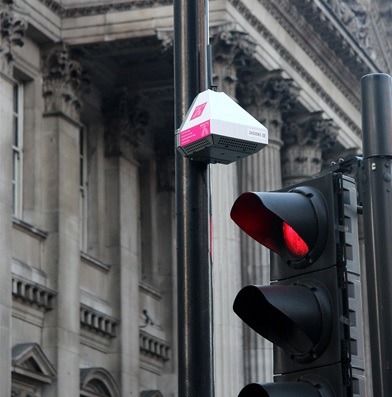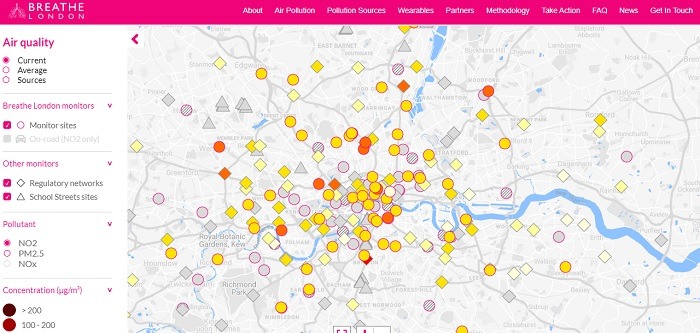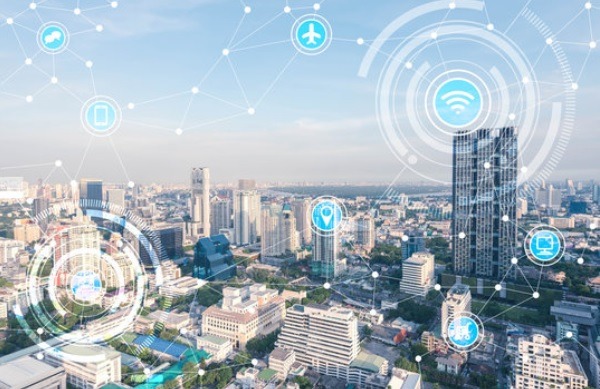
Here we discuss a few recent developments in IoT to help protect the environment. Whether we talk of smart buildings, air quality or water management, the solutions below will have a positive impact on human lives and the ecosystem. There’s enough consensus that IoT-centric solutions can help reverse many of the harmful damage that our environment currently faces.
1. Air Quality Improvement through Smart Cities Initiatives
We often tune in to weather reports to get an air quality update in our location. However, the truth is that the concentration of air pollutants can greatly change across a few blocks. This is where IoT sensors can help give improved and accurate measurements through geo-aggregated sensors. One such solution by AQMesh uses sophisticated pods to provide accurate measurements of gases such as nitrous oxide, carbon monoxide, sulfur dioxide, and PM 2.5 and PM 10.

The idea is to use small sensors to get a digital view of air quality across multiple locations within a city. The project is already a part of London, UK’s smart cities initiative “Breathe London,” through a real-time map of pollution levels across the city.

There are other smart cities initiatives which have shown promise in ensuring more accurate monitoring of air pollution. These include mobile surveying, bike sensors, and drones.
2. Improving Indoor Air Quality through Smart Buildings
We have mentioned the importance of outdoor air quality, which is needed for helping us get fresh air to breathe. But what about indoor air quality? Studies have shown that residential homes can be full of pollutants, such as tobacco smoke, ozone, biological agents such as molds, lead and asbestos, and carcinogens such as radons. This is where smart buildings come in handy.

Many of the pollutants in older buildings seep in through openings, joints, and cracks in doors, walls, floors, and ceilings. New kinds of smart, connected buildings are naturally capable of addressing these challenges through composite building materials but mostly through data digitization.
For example, air data sensing will help monitor indoor air quality inside the home, and with predictive analytics, you can manage the energy consumed. Everything from building occupancy to load on heating, ventilation and air-conditioning systems can be measured in smart buildings.
3. Smart Water Management

According to UN projections, more than 50 percent of the world’s population will live in regions plagued by water crises. This comes when billions of cubic meters of water are wasted every day due to leakages, oversupply, and toxins entering the supply. One solution is to picture smart water systems, which plug the water waste through a network of IoT sensors, analytics systems and other data-driven technologies. Their aim is to have a better assessment of our water needs and improving groundwater supplies.
In Summary
The ongoing COVID-19 crisis has forced many of us to spend much time indoors and has given us a first-person perspective on how fragile our environment is. It reminds us how human activities can add up over time leading to a catastrophic event that can affect our collective health and well-being. Clearly the technologies of the future must address our present environmental challenges with sustainable solutions.
Get the best of IoT Tech Trends delivered right to your inbox!







